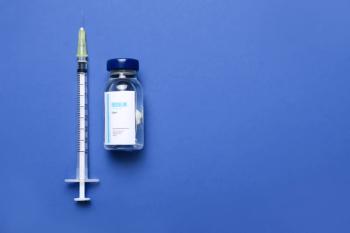
Nonadherence Remains Common Concern in Dermatology
Researchers conducted a review of adherence behaviors for patients with dermatological diseases and provided an update on management strategies.
Concerns of low adherence for dermatological therapies persist, translating to poor patient outcomes, ineffective treatment, and decreased quality of life (QOL), according to a study published in Cureus.1 Researchers believe this low adherence can be owed to the sheer variety of treatment options available for a number of prominent dermatological conditions.
According to the CDC, medication nonadherence is the act of a patient not taking their prescribed medicine or not following their providers’ instructions properly. While many factors can contribute to nonadherence—as well as barriers that impede patients’ ability to be adherent—it is known to result in uncontrolled blood pressure and greater rates of hospital admissions.2
“Despite the common belief that adherence is subpar for asymptomatic conditions such as hypertension, research indicates that adherence is also lacking for dermatological conditions that visibly impact patients' daily lives. Moreover, dermatology, in particular, grapples with the detrimental effects of nonadherence, with half of individuals with chronic skin conditions failing to adhere to prescribed treatments.”
READ MORE:
There are nearly 2 billion people across the world that are impacted by a skin condition.3 With acne impacting the most patients with skin conditions,4 other dermatological diseases include psoriasis, eczema, and rosacea, all with the increased risk of impacting patients’ QOL. With close to 1 billion of these patients exhibiting nonadherence to their treatment regimens, the need for investigation on dermatological adherence is crucial.
“This narrative review aims to provide a comprehensive overview of adherence to treatment regimens in highly prevalent dermatological diseases, including fungal skin infections, psoriasis, acne, atopic dermatitis, and chronic urticaria. By synthesizing current literature and introducing updated information on adherence patterns and management strategies, this review seeks to contribute to the scientific understanding of adherence behaviors in dermatological conditions and offer insights into improving treatment outcomes and the role of pharmacists in managing adherence to treatment,” wrote authors of the current study.1
Starting with antifungal therapy, treatment adherence seems to be determinant on the short timeframes required for patients to take their medications, which include miconazole, sertaconazole, and clotrimazole. While many medication counselors advise patients to only take these medications once a day, they are approved for twice-daily administration. They found that adherence to antifungal therapies decreased as patients were advised to take more medications in shorter timeframes.
“Compared to other chronic dermatological conditions, psoriasis patients exhibit the lowest primary adherence rate, with 44% of individuals neglecting to take their prescribed medication,” wrote the authors.1 Patients with psoriasis experience even greater nonadherence when separated into the types of medications used to treat their condition, whether they are topical, biologic, or oral formulations.
Adherence to acne treatment regimens is suboptimal, and for more complex treatment regimens, adherence is unsurprisingly poorer. For atopic dermatitis, nonadherence is significant due to high treatment expenses, inconvenience, and steroid phobia among the common medications used to treat the condition. Finally, researchers identified nonadherence as a major issue for those prescribed medications to treat chronic urticaria. With suboptimal knowledge of the condition overall, researchers believe suboptimal adherence will be the case among patients with chronic urticaria.
“Promoting treatment adherence is an essential function of health care providers, including pharmacists,” they continued.1 “If patients have questions or concerns about administering their medication, pharmacists are well-equipped with the knowledge and training to help them understand and follow their treatment plan.”
While dermatologists may have expert knowledge on these chronic conditions, it’s pharmacists that possess the authority on medications used to treat diseases like fungal skin infections, psoriasis, acne, atopic dermatitis, and chronic urticaria. As nonadherence rates continue to rise, pharmacists have the unique opportunity to provide medication therapy management and other services that improve patients’ adherence.
Above all, however, researchers concluded their review by encouraging providers to have more conversations with their patients and to focus more on the accuracy of diagnosis and treatment regimens.
“Simplifying treatment plans or increasing the frequency of office visits are 2 examples of interventions that can improve adherence. Accurately diagnosing and treating patients is crucial, but understanding and enhancing adherence is equally important due to its significant impact on costs, health care outcomes, and mortality,” they concluded.1
READ MORE:
Pharmacy practice is always changing. Stay ahead of the curve: Sign up for our
References
1. Cîrstea N, Radu A, Vesa C, et al. Current insights on treatment adherence in prevalent dermatological conditions and strategies to optimize adherence rates. Cureus. 2024 Sep 19;16(9):e69764. doi: 10.7759/cureus.69764.
2. Pharmacy-based interventions to improve medication adherence. CDC. May 15, 2024. Accessed April 29, 2025. https://www.cdc.gov/cardiovascular-resources/php/medication-adherence/index.html
3. WHO’s first global meeting on skin NTDs calls for greater efforts to address their burden. WHO. March 31, 2023. Accessed April 29, 2025. https://www.who.int/news/item/31-03-2023-who-first-global-meeting-on-skin-ntds-calls-for-greater-efforts-to-address-their-burden
4. Skin conditions by the numbers. American Academy of Dermatology Association. February 11, 2025. Accessed April 29, 2025. https://www.aad.org/media/stats-numbers
Newsletter
Pharmacy practice is always changing. Stay ahead of the curve with the Drug Topics newsletter and get the latest drug information, industry trends, and patient care tips.


















































































































